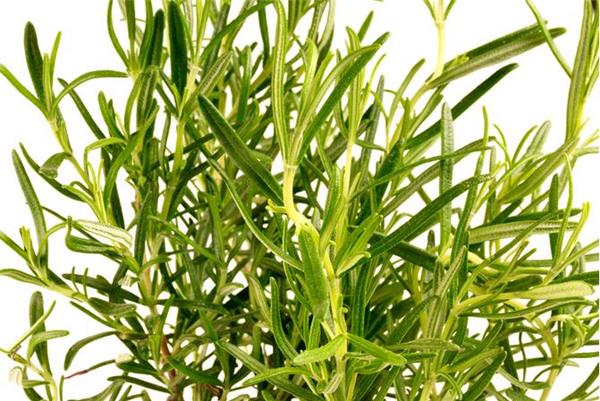Introduction to the efficacy and function of Rosemary and its Edible method
There are many kinds of plants, one of which is rosemary. So, what are the effects and effects of rosemary? How should rosemary be eaten? Today, let's give you a brief introduction. Let's take a look at it.

Introduction of Rosemary
Rosemary is a perennial evergreen subshrub with slow growth and poor regeneration ability. Sex likes a warm climate, which is suitable for the temperature without cold spell in winter. Because the leaves of rosemary are leathery and drought-tolerant, it does not need to be watered too much, and the best cultivated soil is the soil rich in sand and good drainage, which is beneficial to the growth and development of rosemary.
The efficacy and function of Rosemary
1. After being made into scented tea, rosemary can enhance the function of the brain, eliminate flatulence, bad intestines and stomach of the elderly and can be eaten for a long time.
2. It can effectively relieve headache symptoms, improve hair loss and improve memory decline, so now rosemary has become a very popular herbal tea.
3. In addition to these cosmetic effects, it has become a magic weapon for women to maintain beauty and keep fit. Drinking this kind of tea regularly can reduce the occurrence of wrinkles.
4. Rosemary has a variety of functions, so it is also made into essential oil. Rosemary essential oil has a significant effect on the brain and central nervous system, and can reduce your fatigue when used.
5. It helps to treat headaches, migraines, neuralgia, mental fatigue and neurasthenia, whether used for incense or massage.
6. It also helps to treat arteriosclerosis, palpitations, poor circulation and varicose veins.
7. It can treat rheumatic pain and strengthen liver function. The elderly can take more because it has the effect of lowering blood sugar. It also contributes to the treatment of arteriosclerosis.

Propagation methods of Rosemary
Rosemary is often propagated by seed propagation, cuttage propagation and striping propagation. Seed propagation is generally carried out in the greenhouse in early spring, paper towels can be used to promote germination, soil method or hole plate seedling can be used. Cuttage propagation is mostly carried out from winter to early spring, and fresh and healthy stems that are not completely lignified are selected as cuttings. Striping propagation is to make use of the characteristic that rosemary stems can produce adventitious roots, bend the branches close to the ground to cover the soil, leave the top in the air, cut them from the mother after growing new roots, form new individuals, and plant them in the open field.

Edible method of Rosemary
1. Rosemary is widely used in cooking, fresh twigs and leaves have a strong aroma, can eliminate the smell of meat, a few tender stems and leaves (do not need to use too much so as not to destroy the original flavor of the food) can be roasted ribs (pork chops, lamb chops and steak chops). Roast chicken with rosemary has a good flavor.
2. If rosemary leaves are added to the lettuce used for salad, the special aroma is easy to enter the dish. For dishes that need to be heated for a long time, use dried rosemary or add a little rosemary powder after cooking. Rosemary flowers can also be salad, embellished, fragrant and flavored.

This is the end of the introduction of the efficacy and function of rosemary. I believe that after reading it, we will have a certain understanding of rosemary. I hope the relevant knowledge points introduced today can be helpful to everyone.
Related
- Wuhan Hospital Iron Tree Blooming Result Was Instantly Frightened by the Gardener Master
- Which variety of camellia is the most fragrant and best? Which one do you like best?
- What is the small blue coat, the breeding methods and matters needing attention of the succulent plant
- Dormancy time and maintenance management of succulent plants during dormancy
- Minas succulent how to raise, Minas succulent plant pictures
- What are the varieties of winter succulent plants
- How to raise succulent plants in twelve rolls? let's take a look at some experience of breeding twelve rolls.
- Attention should be paid to water control for succulent plants during dormant period (winter and summer)
- Watering experience of twelve rolls of succulent plants
- Techniques for fertilizing succulent plants. An article will let you know how to fertilize succulent plants.



